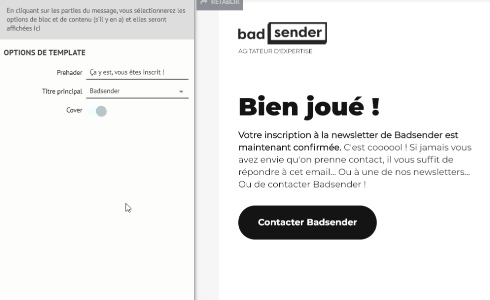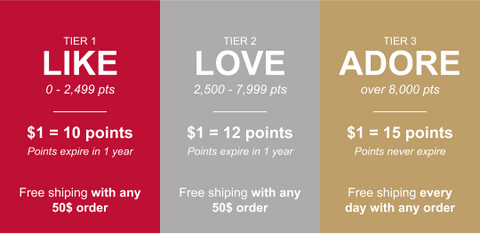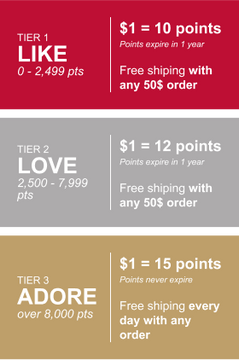"Enough is enough!" would be a quick way to respond to this topic thrown at me by my dear Thomas. Too quick. Since the world is made up of nuances, let's start by defining things and the context in which we approach them.
Design and industrialization to increase the volume of emails produced
So who says Industrialization, says : use of machines, scientific organization of work... Since people like me - designer / developer - are simply unable to work without machines, it is the notion of work organization that will interest us here.
We forget the steam engines and we project ourselves in the digital universe, direction web constellation and email planet. Let's go!
To make email - according to the rules of the art - it is necessary to have a certain number of skills / trades: CRM management, qualification and basic segmentation, sending scenarios, deliverability audit, writing, design, HTML integration... That's a lot of knowledge for one man, isn't it? So if we can get rid of some repetitive tasks, that machines can take over for us, why deprive ourselves?
This being said, we will deal here with industrialization in a production context (design / integration)that is to say my field of competence...
As a designer/developer, I often ask myself: how can I automate some of my work? Thomas - our lead designer - does too and we talk about it regularly. But we're not going to talk about our technical questions. Our job is to meet your needs, so we'll try to put ourselves in your shoes.
Why optimize your email production chain?
If I were to industrialize my email production, it would be for the time saving Instead of rebuilding a design and HTML structure from scratch at each iteration, we can reuse a certain number of elements.
Typically: Header, Footer are elements that can be industrialized. Once their design is well done, they can be reused on all emails. This will even reinforce the brand image of the sender (basic principle of graphic consistency, branding.)
Except that for me, it means having reusable bits of mockup for design as well as "content neutral" HTML blocks, but easily adaptable.
If you are not a designer or integrator, or if you need to share your production with a multidisciplinary team, there are solutions. The email builder! WYSIWYG tools, or no code as we would say now, that allow you to build your emails by assembling elements together and without writing code or opening Photoshop. Or when rapid email design with industrialization allows to increase the volume of emailing campaigns.
And as things are well done, Badsender thinks of you and offers an email builder : LePatron. With this tool, we are able to create a plethora of blocks, reusable and customizable at will.

💡 Feels concerned, who should, or who is : Depending on the context and the needs of each person, the traditional method has its advantages as well. For example, in a context of low sending volume, small teams or the need to reproduce in HTML very complex graphic models that are more of a design challenge (we love it too!).
Too specific and limited, I need customization
Okay, let's take a concrete example of an exchange with a prospect, say... You!
You: we would like a multi-column block (from 2 to 4 columns), with the following elements per column: an image, a title, a text and a cta.
Le Patron: Of course, it is possible!
You: We would also like to be able to change the order of the elements. Sometimes the title will be above the visual, sometimes below and sometimes there will be no title.
Le Patron: This will increase the complexity both in implementation and in use, but it is still entirely feasible!
You: Great! I guess this time you'll say no... But sometimes we would like to add a background image to our multi-column block.
Le Patron: Have you ever seen the Nuls sketch Hassan Cehef ?
You : No
Le Patron: Look at it, it's very funny! But first, I want to tell you for the background image that... Sisi, it's possible!
You I have one last request, but I think I'm dreaming a little bit... Could we have the content of the columns of my multi-column block that goes in 2 columns on mobile? Do you follow me?


Le Patron: Yes, we follow you. We can even tell you that we have just set it up for one of our clients, who is delighted with it... What else ?
You : When do we start ???
Through this small example, you understand thatindustrialization, even if it is there to optimize the volume of emails designed, can also rhyme with creative freedom and that the Le Patron Team is struggling to push the technical limits a little further.
Creativity, design and constraints
Speaking of creative freedom, another strength of the Patron is that it allows you to control it. Depending on your request, we can restrict or expand the different parameters on which your users can interact: type, size and style of fonts; size of margins; size of images and choice of colors (with even a customized palette for these)
On the human level, the interest of a tool like Patron is the access to the production to several trades: it is not necessary to be a designer / email integrator. A writer will be able to create in an autonomous way an email without technical knowledge. The production time is in fact reduced. We no longer work in silos, we decompartmentalize the specificities of our businesses.
To make this possible it is necessary to set a framework and rules. These are your "constraints", we prefer to see them as rules of the game. The environment in which to evolve in order to reach your goal.
In this sense, the industrialization of your production also involves the rationalization of your communication media. Perhaps you had a graphic charter? And yet you didn't really apply it to your digital communication. Now we're talking about a coherent, controlled, adaptable and reusable whole. In short, a design system email directly usable in an email editor!
Shift into high gear
As you can imagine, we don't switch to Patron in the blink of an eye. "How does it work in practice?" you might ask.
- A preparatory workshop is necessary to evaluate your needs, the number of blocks to create and the level of parameterization desired. To make it simple, the idea of Patron is to propose you a solution of industrialization cut to measure for you and only for you.
- Following this workshop, you will be offered a master template design in Figma (our favorite collaborative design tool) see an email design system, according to your needs in terms of graphic guidelines.
- Once the design is validated, we move on to the integration and parameterization phase, followed by a training session to familiarize yourself with the tool and that's it! You're ready to send lots of neat emails! And if you have any questions afterwards, we are quite responsive to support and we have also created a faq here.
Conclusion
I hope to have helped you see a little more clearly on how we think about industrialization and increasing the volume of emails produced with the Patron at Badsender. And also, to have brought you some insights on the usefulness of industrializing your production or not? In short, you will have understood, the basis remains the analysis of your needs (volume of emails, strategy, periodicity) and we can also accompany you for this.
And for those who are on the borderline between these 2 production approaches, you should know that we are asking a lot of questions about a standard and neutral version of a template on the Patron... What do you think?